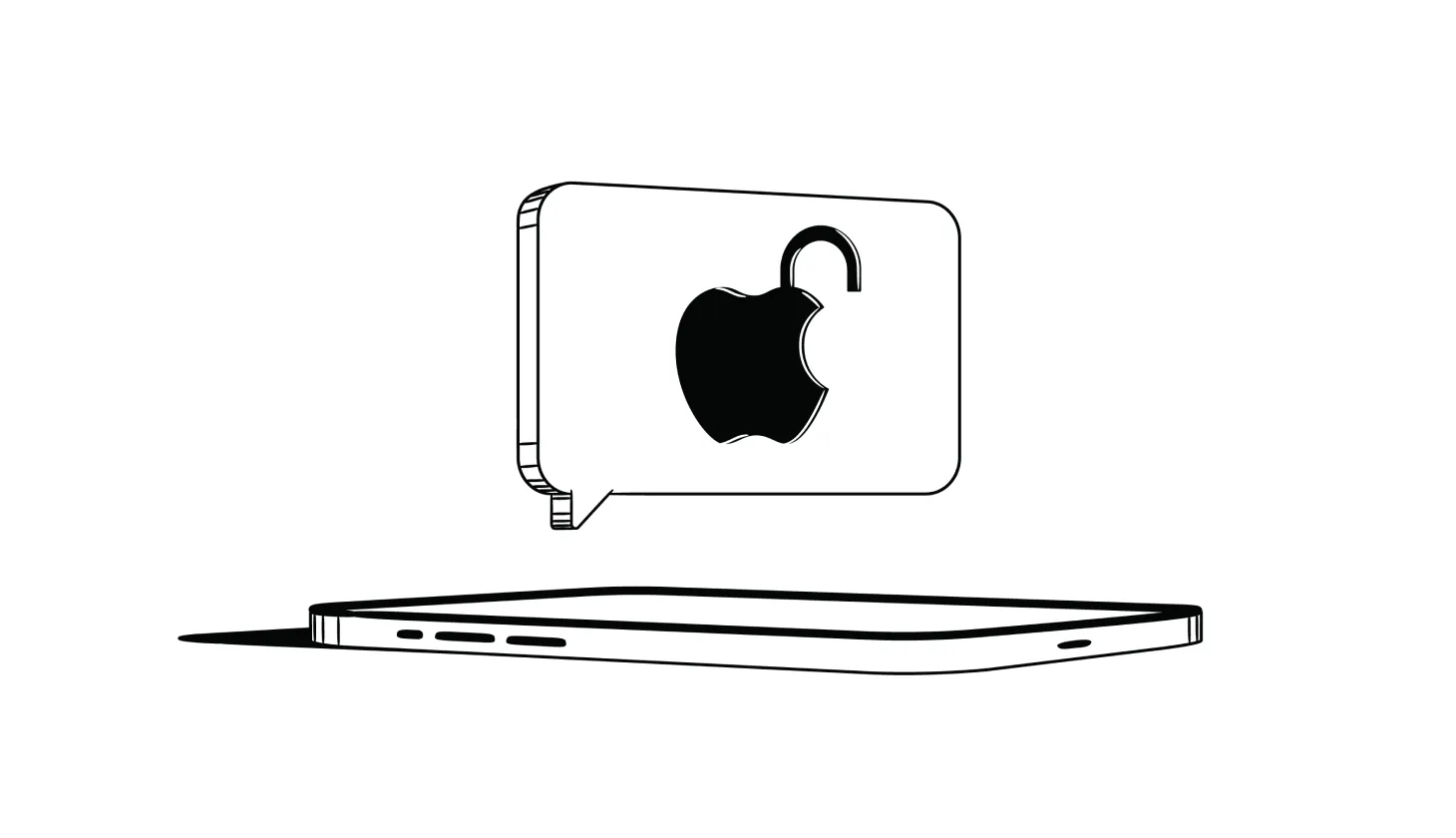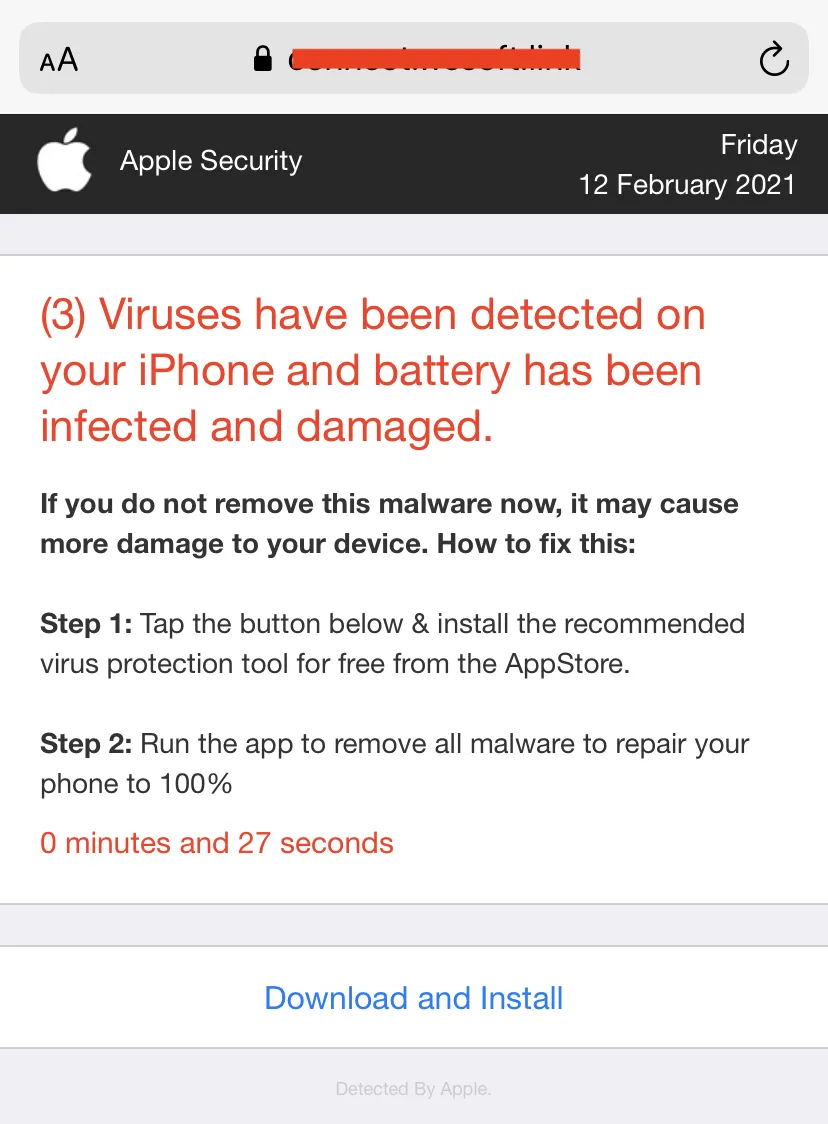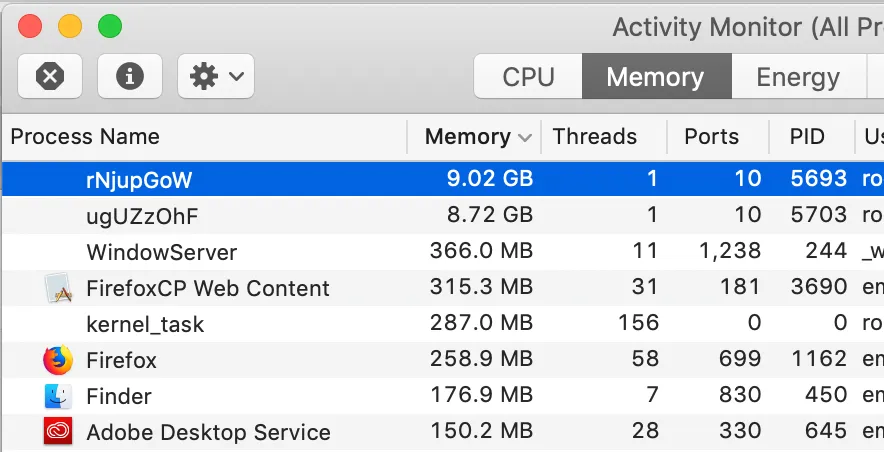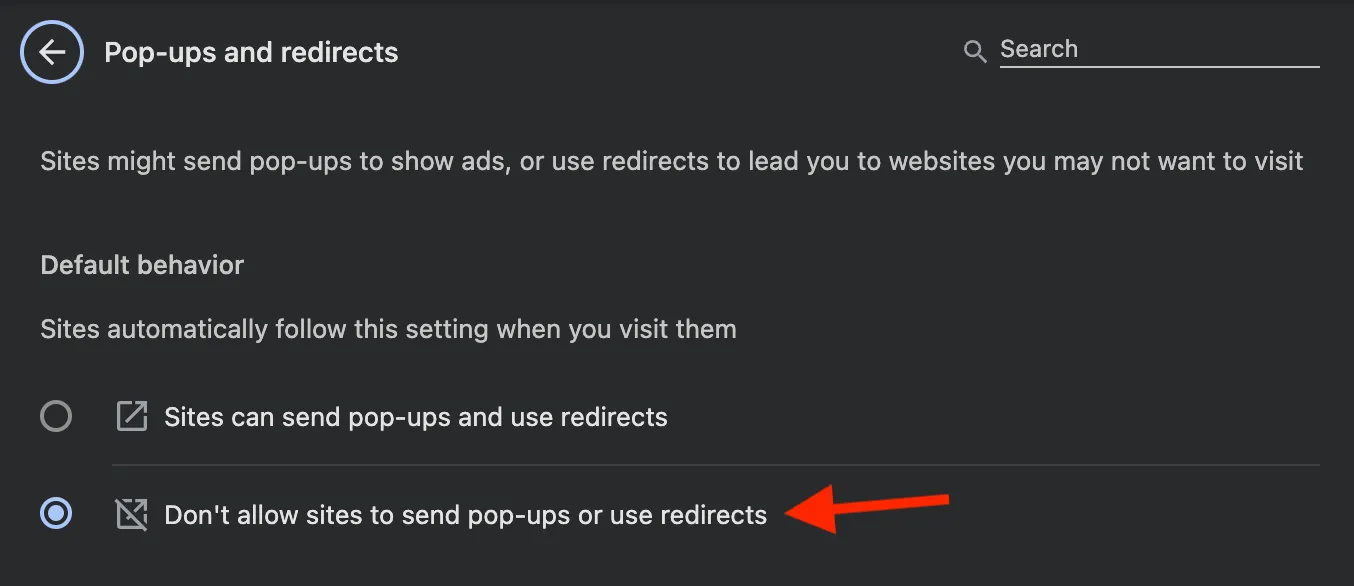Is the Apple Security Alert Real?
If you’re seeing pop-up messages warning you of security alerts or virus attacks against your Apple device, you’re most likely worried. But while these messages may look real, they’re almost certainly scams.
While Macs can get viruses, only about 7% of all malware targets Mac computers — compared to 91% for Windows devices [*].
These fake pop-ups are designed to trick you into giving up your sensitive information, clicking on links that download malware, or calling a scam phone number.
The bad news is that these pop-ups can indicate that your device is compromised in some way. However, the good news is that it doesn’t take much work to remove these pop-ups, check your device for viruses, and secure your identity.
In this guide, we’ll explain how the Mac pop-up virus and Apple security alert scams work — and how you can remove them from your device.
What Is the Apple Security Alert Pop-Up Scam? Why Are You Seeing It?
Thanks to Apple's secure ecosystem, iOS and macOS users don't encounter many security breaches. This means that the overwhelming majority of security alerts are scams.
Depending on the type of scam, you may see messages like “Urgent action required!” or “Viruses have been detected on your Mac/Apple iPhone.”
For the most part, fake Apple security alerts are harmless unless you click on them (although some may signal that your device is infected with adware or spyware).
Cybercriminals use urgent language to scare you into clicking on their malicious links, which could give hackers access to your device, connect you with a fake tech support agent, or download malware posing as fake antivirus software.
Here are some of the reasons why you might be seeing scam pop-ups:
- Malware, adware, or potentially unwanted programs (PUPs). If you accidentally downloaded malicious or infected apps on your Mac or iOS device, they can control the device and show constant pop-ups to redirect you to fake websites or phone numbers.
- Excessive browser permissions or malicious cookies. Sketchy websites can request permissions from your web browser, which may lead to pop-up ads in the form of fake security alerts. Similarly, Apple devices can pick up malicious cookies that contribute to persistent ads.
- Visiting fake websites. Scammers can create look-alikes of well-known sites that trick you into thinking you're somewhere safe and familiar. These fake websites are embedded with pop-up alerts advertising fake security updates or pointing to imaginary vulnerabilities on your device.
- Clicking on fraudulent text messages and email scams. If you clicked on a malicious link in a scam text message or email, you may have infected your device with malware that triggers fake alerts. You may also receive a security alert in the form of a text or email — but this is a phishing attempt to steal your personal data.
- Hacked computers or jailbroken iOS devices. If hackers have access to your device, they can inject malware or hijack your browser and force you onto fake sites. If you jailbreak your device, you could also expose it to unchecked malicious apps.
- Suspicious extensions. While Apple makes it difficult to download suspicious extensions, you may still encounter malicious extensions, especially on jailbroken devices. These extensions could compromise your device with malware or generate fake alerts and ads.
Does Apple send security alerts? Yes, Apple does send real threat notifications — but only to users targeted by state-sponsored attacks [*]. These notifications will appear when you log in to your Apple ID at appleid.apple.com or via email and iMessage. Be cautious when handling emails from Apple as scammers may imitate the official communications.
9 Warning Signs of a Fake Apple Virus or Pop-Up Scam
If you’re still worried that your device has been hacked or compromised, look for these common warning signs that you’re dealing with a scam pop-up:
- Unexpected emails, text messages, or pop-ups claiming your device has a virus. No person or website can tell you that your Apple device is infected with a virus unless you give them access to it. Any email, text, or strange pop-up that warns you of an infection is almost certainly a scam (unless it comes from a reputable antivirus provider).
- Requests to call a technical support number. Calling technical support is often one of the last troubleshooting steps, but many scams try to get you on the phone right away. If you get a message telling you to call a strange number, it's likely a scam. You can also double-check the phone number to verify it's not an Apple number.
- Payment requests — especially using nontraditional methods. Fake security alerts may be advertisements for sketchy antivirus programs or services. Be especially wary if you’re asked to pay for an app or service via payment apps (Zelle, Venmo, etc.), gift cards, or wire transfers.
- Constant pop-ups on your Mac or iPhone. The presence of regular pop-ups means you probably have adware or some other nefarious program or extension on your Apple device. If you start seeing unwanted pop-ups, there's a chance you're going to get a fake security alert at some point.
- You’re asked to share personal information (including passwords). No serious cybersecurity alert will request your personal information. Scammers, however, try to pry away your private data, such as login details and your financial information.
- Your device is acting strangely, getting hot, or crashing regularly. A computer or phone that's acting up may signal that it’s been infected with malware or a virus. These infections run in the background or use up resources, which can overheat your device and cause shutdowns.
- You keep getting redirected to other websites. If you're being taken to sites without your permission, you may have a browser hijacker or a remote access hacker. For instance, some PUPs can cause both browser redirects and fake security alerts.
- Your default browser or other settings suddenly change. Certain types of malware and malicious extensions can change your browser settings without your authorization. If your settings change, don't be surprised if you get fake security alerts as well.
- Any other signs of a phishing attack. When scammers set their sights on you, they may try multiple tactics to steal your information. If you're being bombarded with phishing attempts, such as unsolicited emails, phone calls, or job offers, scammers could also resort to fake virus alerts.
Did you click on a pop-up link or give someone sensitive data? Act quickly! Mac and iPhone pop-up scams can lead to hacking, account takeovers, or even identity theft. If you think you’re a victim, follow these steps on what to do if you clicked on a phishing link or gave up personal information.
How To Remove Fake Apple Security Alerts and Pop-Up Scams (Mac and iPhone)
- Scan your Apple device for malware
- Delete potentially unwanted programs (PUPs)
- Remove suspicious browser extensions
- Check website permission settings
- Clear your browser cookies, cache, and other data
- Block pop-ups in your browser
- Perform a factory reset
While Macs and iPhones keep most malware and viruses at bay, they aren't invincible. If you start seeing fake security alerts and pop-up scams on your Apple devices, follow the steps below to remove them.
1. Scan your Apple device for malware
Many fake security alerts stem from malware and adware deeply embedded in your Apple device, possibly even hiding in your settings or preferences.
To stop pop-up scams, you need to first find the malware at the root of the problem. While Apple doesn't allow third-party apps to scan iPhones, Mac users can find reliable antivirus software from reputable providers.
How to scan your Apple device for malware:
- Avoid free or suspicious antivirus offers. Hackers often hide viruses and ransomware in free antivirus apps or Mac/iPhone “cleanup” tools. Avoid these by only downloading apps from the official Apple App Store — where you can check reviews and know that the developers have passed Apple’s stringent security screenings.
- Run a full scan, and delete suspicious apps. For example, if you’re using Aura’s antivirus software, click on Scan for Viruses and then Full Scan and Scan Now. Aura will detect and quarantine all infected files, which you can delete immediately or leave for automatic deletion.
2. Delete potentially unwanted programs (PUPs)
Apple security alerts are often caused by PUPs — potentially unwanted programs that can lead to annoying ads and unauthorized browser changes. Unlike malware, PUPs may not harm your device directly — but they can contribute to security risks, so it’s best to remove them.
NOTE: Be careful when deleting applications on your Mac. Always research the application name to ensure that it's a PUP before removing it.
How to delete PUPs from your Mac:
- Find and shut down suspicious apps. Open your Finder, select Applications, and then Utilities to find the Activity Monitor. Here, you can see all currently running apps, and spot the suspicious programs. Click on the app you want to shut down, and select Quit or Force Quit to close it [*].
- Remove apps. Open your Finder and select Applications. If the app has a folder, open the folder, click on the Uninstaller, and follow the instructions to remove it. If the app doesn't have a folder or uninstaller, drag the suspicious app into the Trash [*].
3. Remove suspicious browser extensions
Unwanted browser extensions may redirect you to malicious websites riddled with pop-ups, or cause the fake security alert pop-ups themselves. If you think a rogue extension is the cause of your problems, you need to remove it from your browser to stop the security alerts.
How to remove suspicious browser extensions:
- Safari: Open Safari and click on Settings or Preferences and then click on Extensions. You can now click on the suspicious extension and select Uninstall to remove it [*].
- Chrome: Open Chrome and click on the Extensions tab in the Address Bar or click on the three dot icon and then Extensions. You can then select Manage Extensions, click on the suspicious extension, and select Remove [*].
- Firefox: Open Firefox and click on the Menu button. Then select Add-on and themes and then Extensions. Find the suspicious extension and click on the Ellipsis icon and then Remove [*].
💡 Related: Is Guardio Legit? What To Know Before Your Buy →
4. Check website permission settings
Many websites use permissions to generate pop-ups or send notifications. Some abuse the process by misleading users or hiding permissions altogether. Because of this, you can allow a site to send you fake notifications without knowing.
How to check website permissions:
- Safari: In Safari, click on Settings or Preferences and then Websites. You'll then see a list of permission categories, such as Pop-Up Windows, Downloads, and Notifications. Click on a category to see what websites have permissions, and adjust them to your liking [*].
- Chrome: In Chrome, click on the three dot menu button at the top right of the browser and select Settings. Then click on Privacy and security and Site settings. You can then click on the various permissions to see and adjust what sites have permissions [*].
- Firefox: Click on the Menu icon in Firefox and select Settings and Privacy & Security. In the Permissions section, you can select Settings to see and change what sites have access to each permission [*].
💡 Related: Can Someone Hack My iPhone? How To Tell & What To Do →
5. Clear your browser cookies, cache, and other data
Over time, your device picks up tracking cookies, data, and scripts that live in your storage and cache. This can lead to unwanted targeted ads, alerts, and pop-ups, along with corrupted or malicious data and site permissions.
When you clear history and website data, cookies, and cache, you refresh your device.
How to clear your browser cookies, cache, and other data:
- Safari: Open up your Safari Settings and click on Clear History and Website Data. You can also click on Advanced and Website Data to Remove All Website Data but keep your history [*].
- Chrome: In Chrome, click on the three dot icon. Then click on More tools and Clear browsing data. You can also choose a time range [*].
- Firefox: In Firefox, click on the Menu button and select Settings. Then, in the Privacy & Security section, navigate to Cookies and Site Data and select Clear Data [*].
6. Block pop-ups in your browser
While scammers use various methods and exploits to generate fake Apple security alerts, many use basic pop-ups. One of the best ways to avoid scam pop-ups is to block them so that you never see them.
How to block pop-ups in your browser:
- Safari: Open your Safari Settings or Preferences. On an iPhone, you can Block Pop-ups from here. On a Mac, navigate to the Websites first and then click on Block Pop-Ups [*].
- Chrome: Click on the More icon and then Settings. From there, click on Privacy and security, then Site Settings, and then Pop-ups and redirects. You can block pop-ups here [*].
- Firefox: Click on the hamburger Menu button, and click on Settings. Then click on Privacy & Security and navigate to the Permissions section. Enable Block pop-up windows here [*].
💡 Related: How To Check For Viruses On Your Mac →
7. Perform a factory reset
A factory reset will remove all apps, data, and system settings on your device, including most compromised or malicious components. Your device will be returned to its original state, which makes it effective in the fight against malware.
NOTE: Make sure you have a recent and clean backup to restore your personal data.
How to perform a factory reset:
- On your Mac: In the Apple menu, select System Settings or System Preferences. Depending on your device, you may be able to click on Erase All Content and Settings. If not, click on General and then Transfer or Reset first [*].
- On your iPhone or iPad: Click on Settings in your iPhone or iPad and then General. Click on Reset [Device] and Erase All Content and Settings [*].
💡 Related: Why a Factory Reset Won’t Remove All Viruses (Do This Instead) →
The 5 Latest iOS and Mac Pop-up Viruses To Avoid
Scammers are always finding new ways to trick you with pop-up scams. Some of the versions currently circulating out there include:
- Apple Security Alerts. Thanks to PUPs, adware, and malicious websites, you could receive various Apple Security alerts seeking to lure you into clicking on their links. If you do click, you could download malware, give up your information, or pay for a useless program or service.
- “Your Mac/iOS may be infected with X viruses." This pop-up appears when your device is redirected to one of several malicious sites. The pop-up pretends that the website performed a scan of your computer and discovered multiple viruses — something websites can't do. If you follow through with the download, you'll be required to pay for a fake application.
- “Ask You” Mac pop-up scam. Some websites take advantage of your Mac's Notification Center to send you fake "Ask You" hacks and virus warnings. The warnings may stem from a virus, or when you unintentionally allow notification permissions. The scammers hope to trick you into a fake Apple support phone call or remote session so that they can upload malicious code to your device.
- “Your computer is low on memory” pop-up. This specific pop-up comes from adware or a browser redirect exploit on your Apple device. This pop-up tricks you into clicking on the "close" button, which actually activates browser permissions without you knowing. These permissions can lead to browser changes, as well as recording and stealing your private information.
- “Your browsing history showed visits to unsecured websites.” This fake alert appears in a text message from strange numbers and area codes. Generated by scareware or phishing malware, the text comes with a link that leads to a malicious website. Here, you might pick up a virus or be tricked into buying fake software.
While scammers are constantly changing the look and language of these pop-ups, they typically follow the same patterns. Take Aura's spot the scam quiz to test your ability to identify common scams.
How To Shield Your Mac, iPhone, and iPad From Hackers
While Apple has an excellent track record of keeping malware off its devices, there are still threats that users need to be aware of. Thankfully, you can keep your data and devices safe with a solid digital security setup and a proper cyber hygiene regimen.
Here’s what to do to keep your Apple device virus-free:
- Only download apps from the official App Store. Apple thoroughly vets all apps in its official store for quality and security. While some malicious apps may sneak through, you should be safe if you stick to software in the App Store.
- Tighten your device’s security settings. Apple devices run on relatively secure ecosystems, but you should double-check your Mac's security settings via the System Settings in the Apple menu. Click on Privacy & Security and ensure that your device only runs apps from the Mac App Store from identified developers [*].
- Enable auto-updates on your operating system and apps. Apple regularly sends security updates and patches, so be sure to enable auto-updates. In the menu bar of your device, select Settings or System Settings and General. From there, click on Software Update and turn on automatic updates.
- Keep regular backups of your important data. If your device gets corrupted, you may need to restore the device to a secure backup. When this happens, you uninstall all apps and delete all files and settings. If you maintain a regular backup, you won't lose your important data in the process.
- Pay attention to legitimate Gatekeeper alerts. MacBooks and other MacOS devices have Gatekeeper, a security technology that sends alerts when you open a risky app. You may be alerted when opening an app downloaded from an unverified source, an app with an unverified developer, or an app that might damage your computer. Do not ignore these.
- Use strong passwords and 2FA on your accounts. Passwords and two-factor authentication are the only defenses that your online accounts have against cybercriminals. Make passwords strong and unique, and regularly update them to keep intruders out. A secure password manager allows you to create and store unique passwords for every account, so you don’t have to worry about remembering them.
- Look for the warning signs of phishing scams. You can avoid most phishing scams with awareness and caution. Look out for the telltale signs of a scam, such as unsolicited messages with strange links, unrelated contact information, and urgent phrasing.
- Don’t click on unknown links or download strange attachments. Scammers use links to hide malicious programs and apps and redirect victims to fake websites. You're always best to avoid clicking on unsolicited links. You can also hover over a link to see where it will take you before clicking.
For the most comprehensive protection, consider Aura’s all-in-one solution.
Aura constantly monitors and protects your online and financial accounts and secures your devices with AI-powered digital security, Safe Browsing tools, a military-grade VPN, password manager, and a virus scanner. And if the worst should happen, Aura also provides up to $5 million in identity theft insurance along with 24/7/365 fraud resolution support.



.svg)





